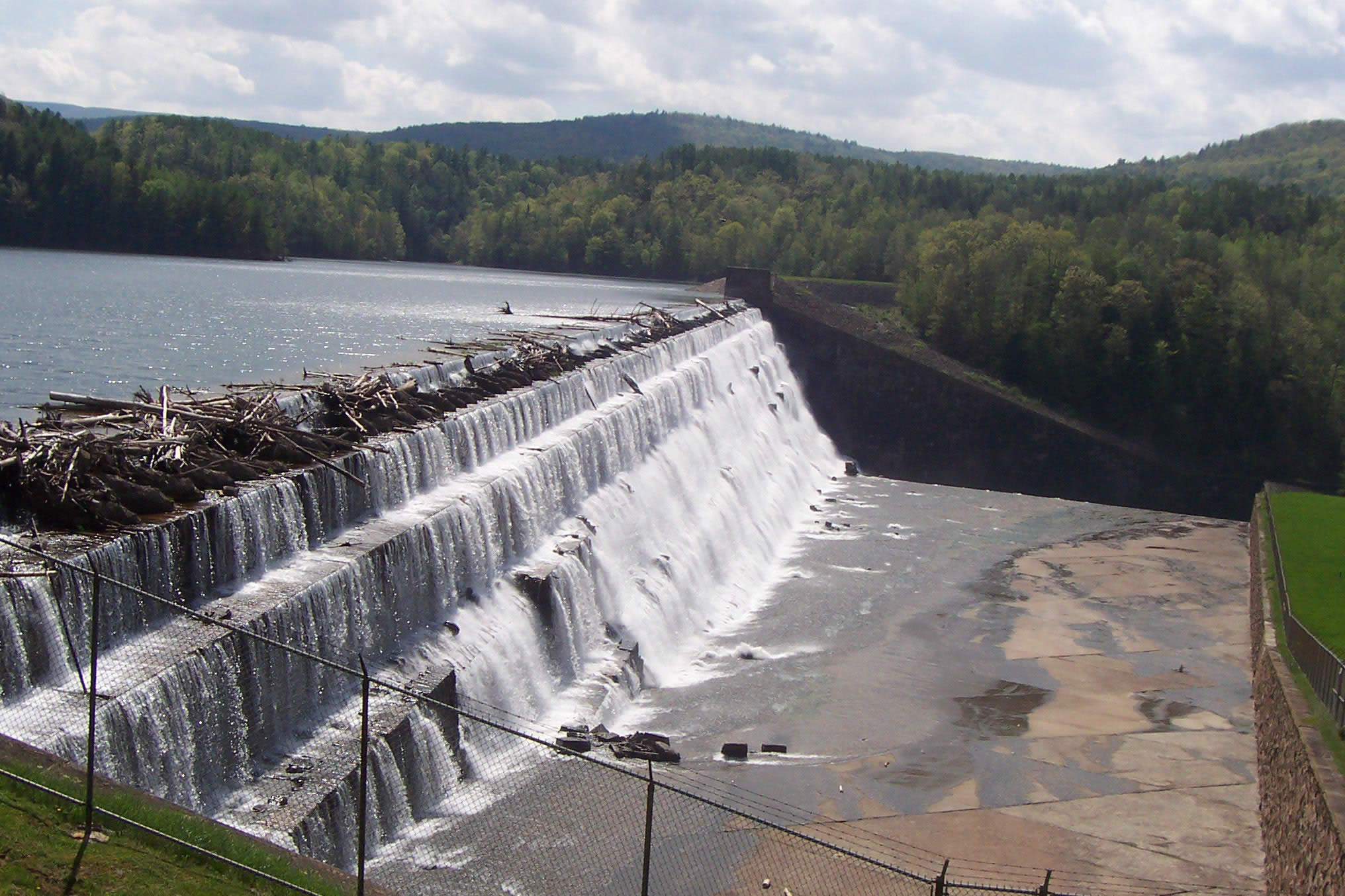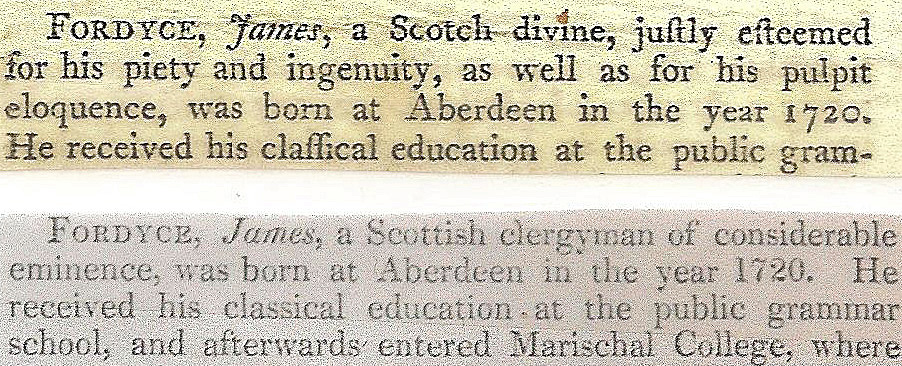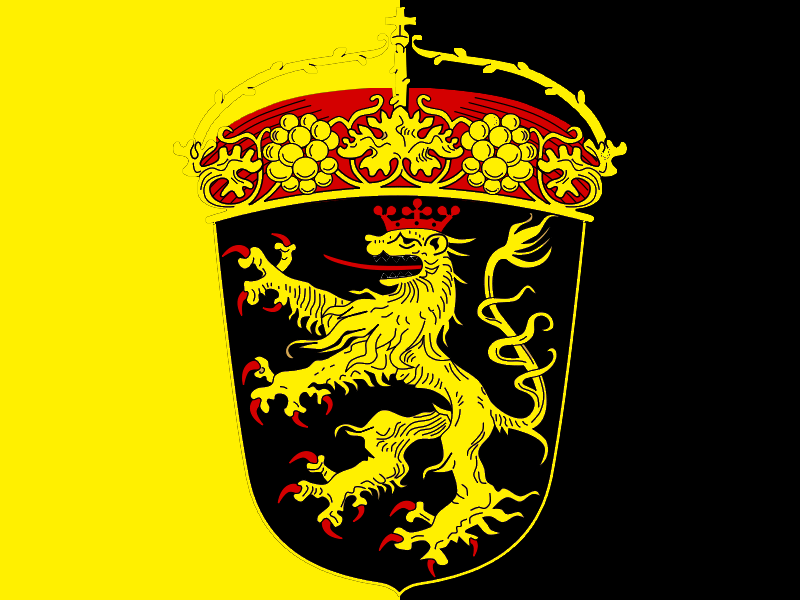|
Schoharie County, New York
Schoharie County ( ) is a county in the U.S. state of New York. As of the 2020 census, the population was 29,714, making it the state's fifth-least populous county. The county seat is Schoharie. "Schoharie" comes from a Mohawk word meaning "floating driftwood." Schoharie County is part of the Albany- Schenectady-Troy, NY Metropolitan Statistical Area and thus the Capital District of New York. The county is part of the Mohawk Valley region of the state. History The large territory of the county was long occupied by the Mohawk Nation and, to the west, the other four tribes of the Iroquois (Haudenosaunee) Confederacy (increased to six with the migration of the Tuscarora). After European colonization of the Northeast started, the Mohawk had a lucrative fur trade with the French coming down from Canada, as well as the early Dutch colonists, and later British and German colonists. Some Palatine Germans, who worked in camps on the Hudson to pay off their passage in 1710, ... [...More Info...] [...Related Items...] OR: [Wikipedia] [Google] [Baidu] |
Counties Of New York
There are 62 county (United States), counties in the U.S. state of New York (state), New York. The first 12 counties were created in 1683 soon after the British took over the Dutch colony of New Amsterdam; two of these counties were later abolished, their land going to Massachusetts. These counties were carried over after independence in 1783, but most of the counties were created by the state in the 19th century. The newest county is the Bronx, created in 1914 from the portions of New York County that had been annexed from Westchester County, New York, Westchester County in the late 19th century. New York's counties are named for various Native American words; British provinces, counties, cities, and royalty; early American statesmen and military personnel; and New York State politicians. Authority Excepting the five boroughs of New York City, New York counties are governed by New York County Law and have governments run by either a Board of Supervisors or a County Legisla ... [...More Info...] [...Related Items...] OR: [Wikipedia] [Google] [Baidu] |
Mohawk Valley
The Mohawk Valley region of the U.S. state of New York is the area surrounding the Mohawk River, sandwiched between the Adirondack Mountains and Catskill Mountains, northwest of the Capital District. As of the 2010 United States Census, the region's counties have a combined population of 622,133 people. In addition to the Mohawk River valley, the region contains portions of other major watersheds such as the Susquehanna River. The region is a suburban and rural area surrounding the industrialized cities of Schenectady, Utica and Rome, along with other smaller commercial centers. The area is an important agricultural center and encompasses the heavily forested wilderness areas just to the north that are part of New York's Adirondack Park. The Mohawk Valley is part of a natural passageway connecting the Atlantic Ocean, by way of the Hudson Valley, with the interior of North America. Native American Nations of the Iroquois Confederacy lived in the region. In the 17th ce ... [...More Info...] [...Related Items...] OR: [Wikipedia] [Google] [Baidu] |
Albany County, New York
Albany County ( ) is a county (United States), county in the U.S. state, state of New York (state), New York, United States. Its northern border is formed by the Mohawk River, at its confluence with the Hudson River, which is to the east. As of the 2020 United States Census, the population was 314,848. The county seat and largest city is Albany, New York, Albany, which is also the List of U.S. state capitals, state capital of New York. As originally established by the English government in the colonial era, Albany County had an indefinite amount of land, but has had an area of since March 3, 1888. The county is named for the Duke of York and Duke of Albany, of Albany, who became James II of England (James VII of Scotland). The county is part of the Capital District (New York), Capital District region of the state. History Colonial After England took control of the colony of New Netherland from the Dutch colonization of the Americas, Dutch, Albany County was created on Novemb ... [...More Info...] [...Related Items...] OR: [Wikipedia] [Google] [Baidu] |
Treaty Of Breda (1667)
The Peace of Breda, or Treaty of Breda was signed in the Dutch city of Breda, on 31 July 1667. It consisted of three separate treaties between England and each of its opponents in the Second Anglo-Dutch War: the Dutch Republic, France, and Denmark–Norway. It also included a separate Anglo-Dutch commercial agreement. Negotiations had been in progress since late 1666 but were slow, as both sides tried to improve their positions. This changed after the French invasion of the Spanish Netherlands in late May, which the Dutch viewed as a more serious threat. War-weariness in England was increased by the June Raid on the Medway. Both factors led to a rapid agreement of terms. Among the terms was confirmation of colonial territories taken in the War, including Suriname to the Dutch and New Netherland (New York) to the English. Prior to 1667, the Anglo-Dutch relationship had been dominated by commercial conflict, which the treaty did not end entirely. However, tensions decreased ma ... [...More Info...] [...Related Items...] OR: [Wikipedia] [Google] [Baidu] |
New Netherland
New Netherland () was a colony of the Dutch Republic located on the East Coast of what is now the United States. The claimed territories extended from the Delmarva Peninsula to Cape Cod. Settlements were established in what became the states of New York, New Jersey, Delaware, and Connecticut, with small outposts in Pennsylvania and Rhode Island. The colony was originally conceived by the Dutch West India Company (GWC) in 1621 to capitalize on the North American fur trade. Settlement initially stalled because of policy mismanagement by the GWC and conflicts with Native Americans. The settlement of New Sweden by the Swedish South Company encroached on its southern flank, while its eastern border was redrawn to accommodate the English colonies of an expanding New England Confederation. The colony experienced dramatic growth during the 1650s and became a major center for trade across the North Atlantic. The Dutch conquered New Sweden in 1655 but, during the Second Anglo-Dut ... [...More Info...] [...Related Items...] OR: [Wikipedia] [Google] [Baidu] |
Second Anglo-Dutch War
The Second Anglo-Dutch War, began on 4 March 1665, and concluded with the signing of the Treaty of Breda (1667), Treaty of Breda on 31 July 1667. It was one in a series of Anglo-Dutch Wars, naval wars between Kingdom of England, England and the Dutch Republic, driven largely by commercial disputes. Despite several major battles, neither side was able to score a decisive victory, and by the end of 1666 the war had reached stalemate. Peace talks made little progress until the Dutch Raid on the Medway in June 1667 forced Charles II of England, Charles II to agree to the Treaty of Breda. By eliminating a number of long-standing issues, the terms eventually made it possible for England and the Dutch Republic to unite against the expansionist policies pursued by Louis XIV of France. In the short-term however, Charles' desire to avenge this setback led to the Third Anglo-Dutch War in 1672. Background Despite similar ideologies, commercial disputes and political differences between th ... [...More Info...] [...Related Items...] OR: [Wikipedia] [Google] [Baidu] |
Cherry Creek, New York
Cherry Creek is a Administrative divisions of New York#Town, town in Chautauqua County, New York, Chautauqua County, New York (state), New York, United States. The population was 1,036 at the 2020 census. The name is derived from that of a small stream that flows through the town amid many cherry trees. Cherry Creek is situated on the east border of the county, northeast of Jamestown, New York, Jamestown. There is also a Administrative divisions of New York#Hamlet, hamlet named Cherry Creek (hamlet), New York, Cherry Creek located within the town. History The community was first settled circa 1815, and the town of Cherry Creek was formed in 1829 from part of the town of Ellington, New York, Ellington. The settlement got its name from a cherry tree planted by Holland Land Company surveyor Joshua Bentley to mark the center of the new town. The village, which was incorporated in 1893, voted on February 2, 2017, to dissolve into the surrounding town. Geography According to the Un ... [...More Info...] [...Related Items...] OR: [Wikipedia] [Google] [Baidu] |
American Revolutionary War
The American Revolutionary War (April 19, 1775 – September 3, 1783), also known as the Revolutionary War or American War of Independence, was the armed conflict that comprised the final eight years of the broader American Revolution, in which American Patriot (American Revolution), Patriot forces organized as the Continental Army and commanded by George Washington defeated the British Army during the American Revolutionary War, British Army. The conflict was fought in North America, the Caribbean, and the Atlantic Ocean. The war's outcome seemed uncertain for most of the war. However, Washington and the Continental Army's decisive victory in the Siege of Yorktown in 1781 led King George III and the Kingdom of Great Britain to negotiate an end to the war in the Treaty of Paris (1783), Treaty of Paris two years later, in 1783, in which the British monarchy acknowledged the independence of the Thirteen Colonies, leading to the establishment of the United States as an independent and ... [...More Info...] [...Related Items...] OR: [Wikipedia] [Google] [Baidu] |
Scotch-Irish Americans
Scotch-Irish Americans are American descendants of primarily Ulster Scots people, who emigrated from Ulster (Ireland's northernmost province) to the United States between the 18th and 19th centuries, with their ancestors having originally migrated to Ulster, mainly from the Scottish Lowlands and Northern England in the 17th century. In the 2017 American Community Survey, 5.39 million (1.7% of the population) reported Scottish ancestry, an additional 3 million (0.9% of the population) identified more specifically with Scotch-Irish ancestry, and many people who claim "American ancestry" may actually be of Scotch-Irish ancestry. The term ''Scotch-Irish'' is used primarily in the United States,Leyburn 1962, p. 327. with people in Great Britain or Ireland who are of a similar ancestry identifying as Ulster Scots people. Many left for North America, but over 100,000 Scottish Presbyterians still lived in Ulster in 1800. With the enforcement of Queen Anne's 1704 Popery Act, which c ... [...More Info...] [...Related Items...] OR: [Wikipedia] [Google] [Baidu] |
Palatines
Palatines () were the citizens and princes of the Palatinates, Holy Roman States that served as capitals for the Holy Roman Emperor. After the fall of the Holy Roman Empire in 1806, the nationality referred more specifically to residents of the Rhenish Palatinate, known simply as "the Palatinate". American Palatines, including the Pennsylvania Dutch, have maintained a presence in the United States as early as 1632 and are collectively known as "Palatine Dutch" (). The earliest Palatines settled in the Maryland Palatinate, an American palatinate established by the Calvert family as a haven for Catholic refugees. Holy Roman Nationality Paladins The term ''palatine'' or ''palatinus'' was first used in the Roman Empire for chamberlains of the emperor (e.g. Chamberlain of the Holy Roman Church) due to their association with the Palatine Hill, the home where Roman emperors lived since Augustus Caesar (and whence "palace"). After the fall of Ancient Rome, a new feudal type of ... [...More Info...] [...Related Items...] OR: [Wikipedia] [Google] [Baidu] |
Fur Trade
The fur trade is a worldwide industry dealing in the acquisition and sale of animal fur. Since the establishment of a world fur market in the early modern period, furs of boreal ecosystem, boreal, polar and cold temperate mammalian animals have been the most valued. Historically the trade stimulated the exploration and colonization of Siberia, northern North America, and the South Shetland Islands, South Shetland and South Sandwich Islands. Today the importance of the fur trade has diminished; it is based on pelts produced at fur farms and regulated fur-bearer trapping, but has become controversial. Animal rights organizations oppose the fur trade, citing that animals are brutally killed and sometimes skinned alive. Fur has been replaced in some clothing by synthetic fiber, synthetic imitations, for example, as in ruffs on hoods of parkas. Continental fur trade Russian fur trade Before the European colonization of the Americas, Russia was a major supplier of fur pelts to W ... [...More Info...] [...Related Items...] OR: [Wikipedia] [Google] [Baidu] |
Tuscarora People
The Tuscarora (in Tuscarora language, Tuscarora ''Skarù:ręˀ'') are an indigenous people of the Northeastern Woodlands in Canada and the United States. They are an Iroquoian Peoples, Iroquoian Native Americans in the United States, Native American and First Nations in Canada, First Nations people. The Tuscarora Nation, a federally recognized tribe, is based in New York (state), New York, and the Tuscarora First Nation is one of the Six Nations of the Grand River in Ontario. Prior to European contact, the Tuscarora lived in the Carolinas along the Roanoke River, Roanoke, Neuse River, Neuse, Tar River, Tar, and Pamlico River, Pamlico Rivers.F.W. Hodge, "Tuscarora" ''Handbook of American Indians'', Washington, DC: Smithsonian Institution, 1906, at AccessGenealogy, accessed 28 Oct. 2009 [...More Info...] [...Related Items...] OR: [Wikipedia] [Google] [Baidu] |











